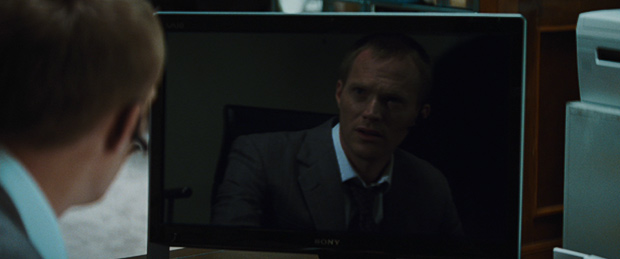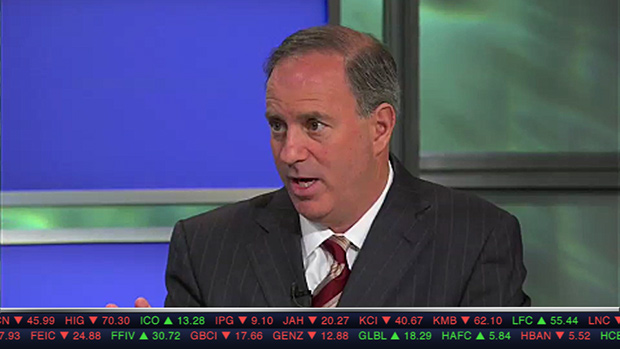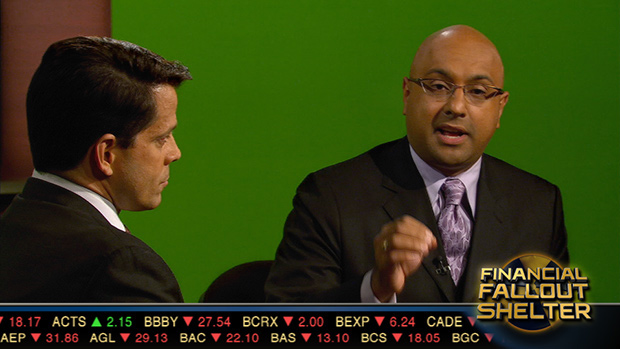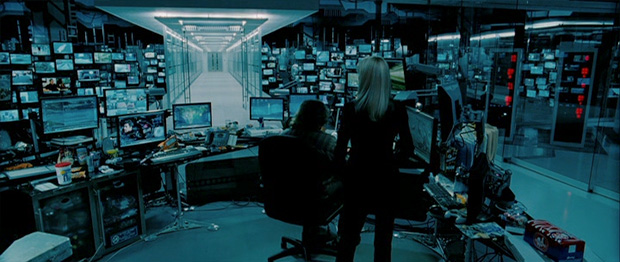In the Tourist because so much of the computer screens used surveillance video that was going to be shot later, we ended up compositing most of the screens in post production.
In the Scotland Yard set we decided to shoot the screens off so that we could get nice reflections of the actors that we could blend back in with the computer graphics that were built by Coplin LeBleu.

Move mouse to see before & after (touch on left & right of image on a touch screen device)
All the 50+ VFX monitor shots in the film were composited in Adobe After Effects.
We also had to match the color and look of the screens that were shot on set. The three screens behind the 2 standing actors were live on set and the screen on the lower left is one I composited in post.
Again in this shot I needed to replace the bottom left screen with a different surveillance video while still matching the look of the other monitors in the original shot.
Also needed to replace a phone screen in order to make the action of taking Jonny's picture more visible.














































